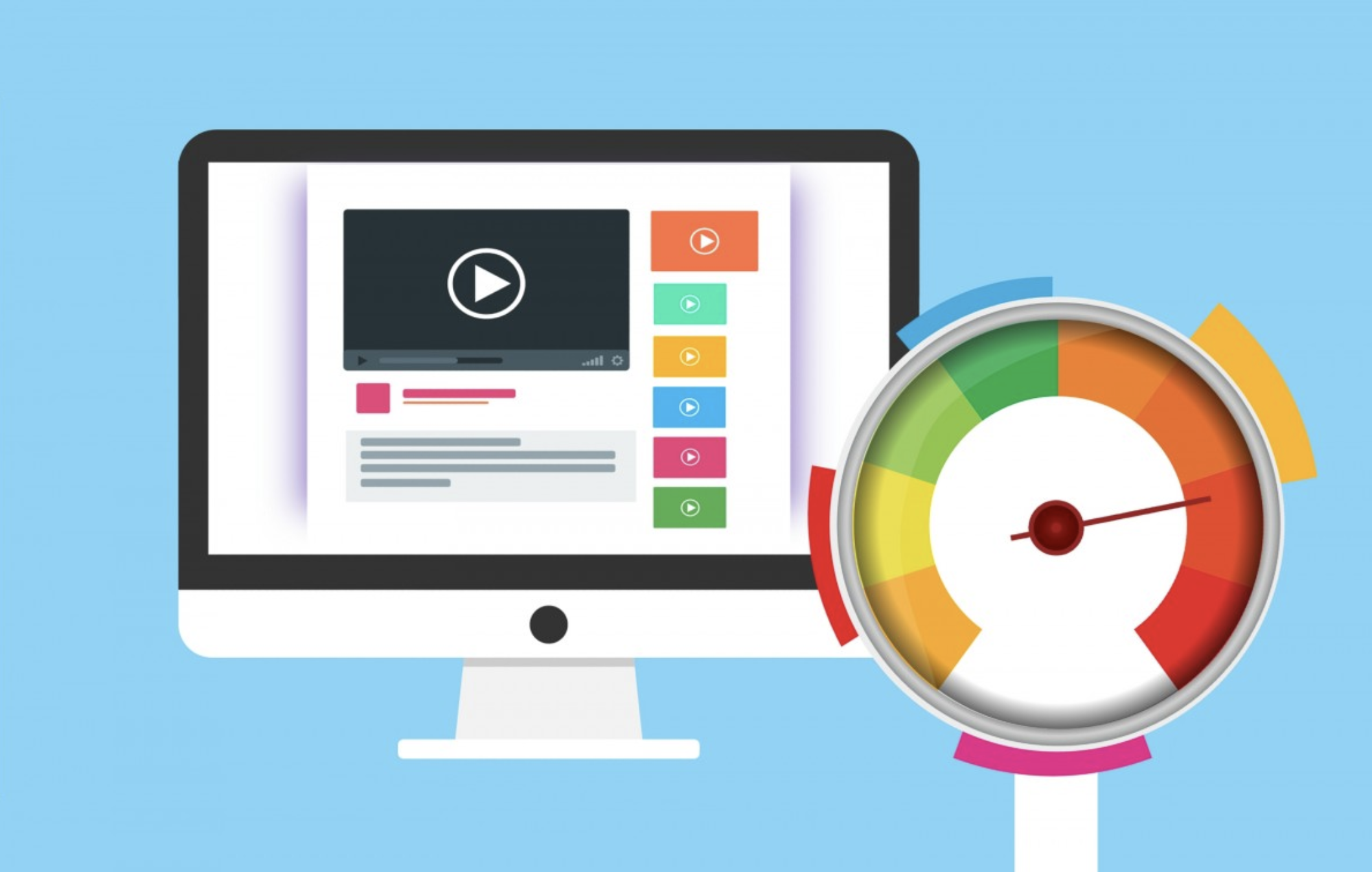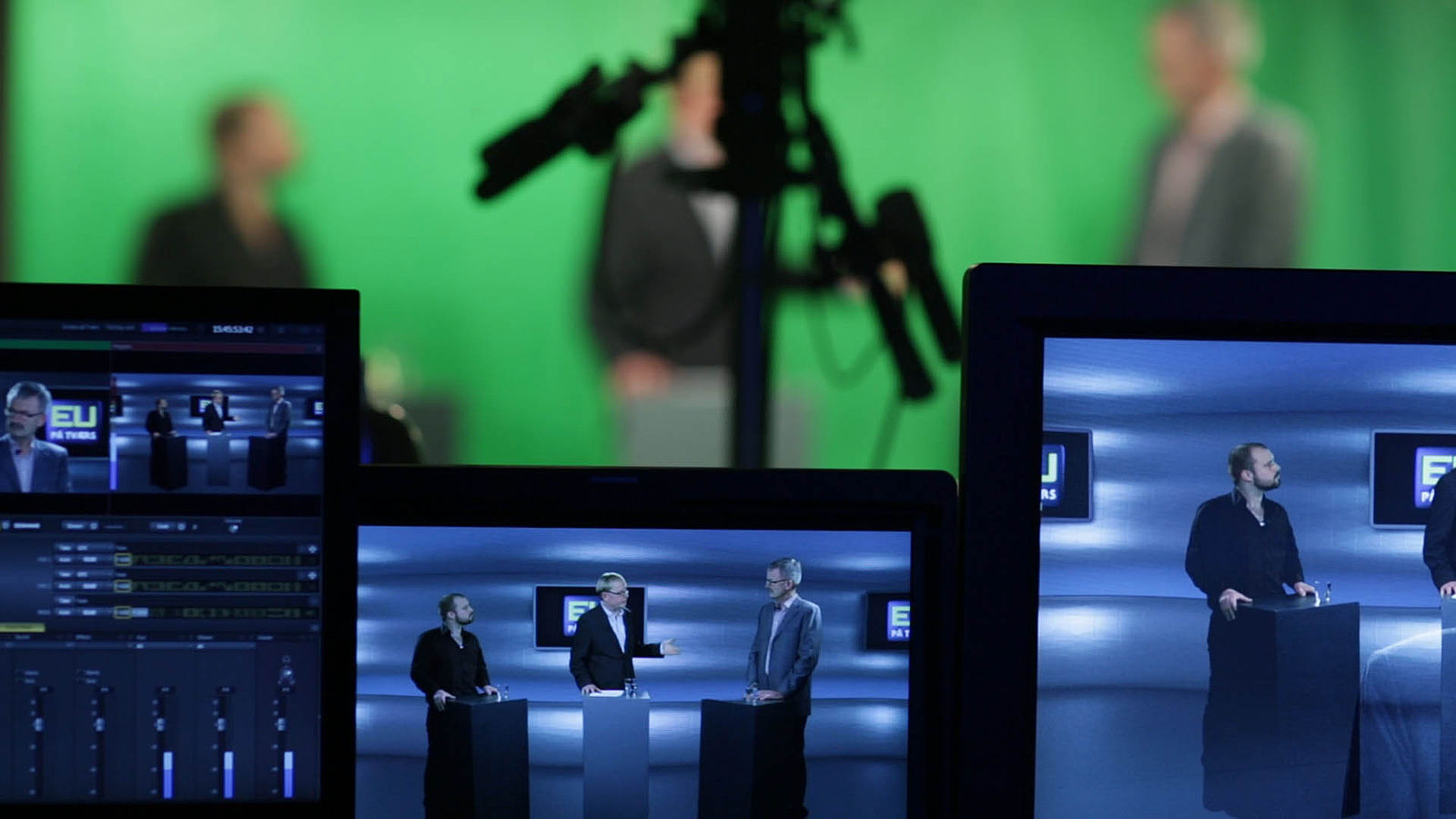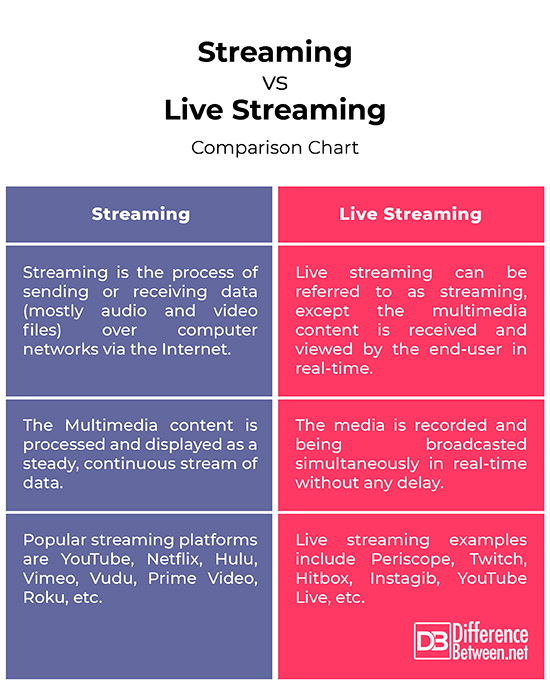Difference Between Streaming and Live Streaming
Just like cinema and radio were once ousted by the television as the primary medium of mass communication and entertainment, streaming has transformed the World Wide Web in the present digital era we live in. Today, audio and video are considered the most natural means to communicate, as opposed to conventional text-based standards. Streaming has been considered by many as an alternate delivery channel to conventional television and radio. Before going any further, let’s get one thing out of the way: what is streaming? The term ‘streaming’ can be used to refer to many things that can lead to misunderstandings about what streaming really is. You often hear the words streaming, live streaming these days. But ever wonder what they actually are and how they are driving the digital media revolution?
Streaming media is transforming the entertainment industry in a myriad of ways, yet we do not fully understand what it really is and how is it doing what it is doing. We come across streaming media almost every day – media platforms such as Netflix, Hulu, YouTube, etc. are changing the landscape of the media industry and even beyond that. We present this article specifically to help the new entrants understand the concept of streaming and live streaming and how this ever-evolving phenomenon has managed to capture the attention of billions of people around the world who demand a quality viewing experience anytime, anywhere, and on any device. It would suffice to say, streaming is the backbone of today’s digital media landscape.
What is Streaming?
Streaming is the process of sending or receiving data (mostly audio and video files) over computer networks among mobile devices via the Internet. It simply is a means to display multimedia content which can be processed as a steady, continuous flow. Streaming media is delivered by a provider and received by the users in real-time. The term “stream” refers to the technique of delivering and receiving media, rather than the media itself. Streaming media has dramatically revolutionized the ways in which media is transmitted and consumed. Most of us or it would suffice to say, almost all of us, engage with streaming media on a daily basis via streaming media platforms such as Netflix, YouTube, Spotify, Prime Video, iTunes, Hulu, Vudu, Vimeo, and more. Today, the Internet pervades our lives and at the center of it is streaming media.
What is Live Streaming?
In general terms, live streaming can be referred to simply as streaming, except the multimedia content is received and viewed by the end-user in real-time. The term ‘live’ here means the streaming media is recorded and being broadcasted simultaneously in real-time, without any delay or time gap. Live streaming is basically the same as streaming, except it allows the content to be delivered over the Internet as a live stream of data. Live streaming is an easy and effective way to reach the audience in real-time like podcasts or webcasts. However, a webcast can be distributed both live and on-demand. For example, encoded streaming media files are aimed at single-purpose transmission and playback over the Internet in real-time.
Difference between Streaming and Live Streaming
Meaning
– Streaming is the process of sending or receiving data (mostly audio and video files) over computer networks among mobile devices via the Internet. It simply is a means to display multimedia content which can be processed as a steady, continuous flow. Live streaming, on the other hand, is basically the same as streaming in general terms, except in live streaming, the streaming media is recorded and being broadcasted simultaneously in real-time without any significant delay or time gap. This means the video or audio appears to the viewers in real-time and it is played as it arrives.
Technology
– The main focus of streaming media providers today is video on demand, which involves delivering video or audio files upon a user’s request from a server to the user’s player application. The point is to choose an appropriate delay to start the playback so that the video will be played from the beginning to end without interruptions. In live streaming, a source generates a video stream on-the-fly and transmits it the audience in real-time without any possible delay, and the end-user receives the data consistently at its full rate. However, the usual caching techniques on which the regular streaming relies cannot be applied.
Streaming vs. Live Streaming: Comparison Chart
Summary of Streaming vs. Live Streaming
In general terms, live streaming is basically the same as streaming, except in live streaming, the multimedia content is received and viewed by the end-user in real-time without any significant delay or time gap meaning the media is played as it arrives. In regular streaming, digital media is processed and displayed as a steady, continuous stream of data through streaming media platforms such as Netflix, YouTube, Vimeo, Roku, Hulu, and more. With regular streaming, the media file is a pre-recorded, static file that’s being downloaded onto the system that the media server has access to. Live streaming, on the other hand, presents a whole different set of challenges compared to video on demand. The media is simply intended for single-purpose transmission and playback over the Internet in real-time.
- Difference Between Caucus and Primary - June 18, 2024
- Difference Between PPO and POS - May 30, 2024
- Difference Between RFID and NFC - May 28, 2024
Search DifferenceBetween.net :
Leave a Response
References :
[0]Image credit: https://c.pxhere.com/images/fe/74/090c381c886f947c63fbea50dc28-1581253.jpg!d
[1]Image credit: https://commons.wikimedia.org/wiki/File:Green_screen_live_streaming_production_at_Mediehuset_K%C3%B8benhavn.jpg
[2]Austerberry, David. The Technology of Video and Audio Streaming. Abingdon, UK: Taylor & Francis, 2013. Print
[3]Follansbee, Joe. Get Streaming!: Quick Steps to Delivering Audio and Video Online. Boca Raton, Florida: CRC Press, 2012. Print
[4]D’Oliveiro, Michael. The Streaming Media Guide. Abingdon, UK: Routledge, 2019. Print



